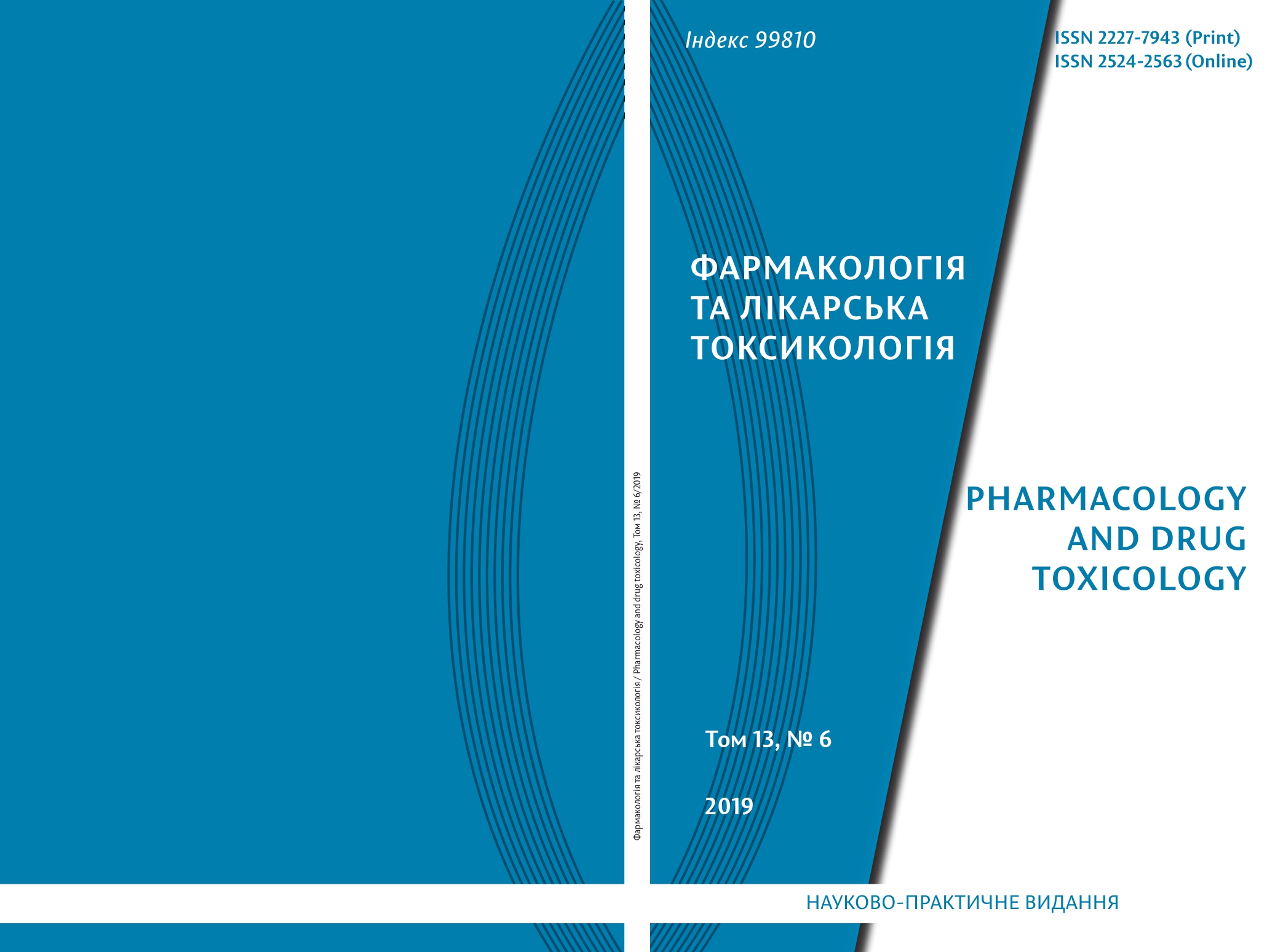Abstract
Modern principles of comorbid patients with cardiovascular diseases and severe mental disorders treatment are aimed at limiting polypharmacy. Therefore, the search for multimodal drugs that can simultaneously provide both cardioprotective and neuromodulatory effects is promising. In this aspect, derivatives of 2-oxoindolin-3-glyoxylic acid, which exhibit a wide spectrum of neurotropic activity, are attracting attention. The aim of the study is to determine the effect of a potential neurotropic agent – 2-hydroxy-N-naphthalen-1-yl-2-(2-oxo-1,2-dihydro-indol-3-ylidene)-acetamide (conditional name – compound 18) during the experimental damage of the rat’s heart. The experiments were conducted on 38 adult male random-bred albino rats. Adrenaline-induced myocarditis was performed by a single subcutaneous injection of adrenaline hydrotartrate (Adrenaline-Darnitsa, solution for injections, 1.8 mg/ml, Darnitsa, Ukraine) at a dose of 1 mg/kg. The test substance at a dose of 12 mg/kg and the reference drug ethylmethylhydroxypyridine succinate (Armadin, solution for injections, 50 mg/ml, Lekhim-Kharkiv, Ukraine) at a dose of 100 mg/kg were administered intraperitoneally in the treatment and prophylactic regimen for 30 minutes before and 1 hour after myocardial damage modeling. The functional condition of the myocardium was evaluated according to the electrocardiogram. The severity of destructive processes in the heart muscle was determined by the activity of the MB-fraction of creatine phosphokinase, enzyme markers of cytolysis – aspartate aminotransferase and alanine aminotransferase in rat blood plasma. The intensity of lipid peroxidation was determined by the content of active products reacting with thiobarbituric acid in the blood plasma and rat myocardial homogenate, the condition of the antioxidant system was determined by the activity of superoxide dismutase and catalase in the myocardial homogenate. The morphological state of the heart of rats was also investigated. It was established that adrenaline-induced myocarditis in rats is accompanied by both functional (electrocardiographic and biochemical) changes and diffuse morphological signs of myocardial ischemia (spasm of thin-walled vessels, venous congestion), cardiac muscle degeneration (edema, loss of transverse striation) and cardiomyocyte necrosis. At the same time, compound 18 under the conditions of adrenaline-induced myocarditis has a pronounced cardioprotective effect, which is determined by the normalization of electrocardiographic indicators and biochemical markers of the functional state of the myocardium, as well as morphologically – by the reduction of the ischemia and dystrophy manifestations in the heart muscle of animals. It was also established that the cardioprotective action of compound 18 significantly exceeds the effect of the reference drug ethylmethylhydroxypyridine succinate under the experimental adrenaline pathology of rat heart.
